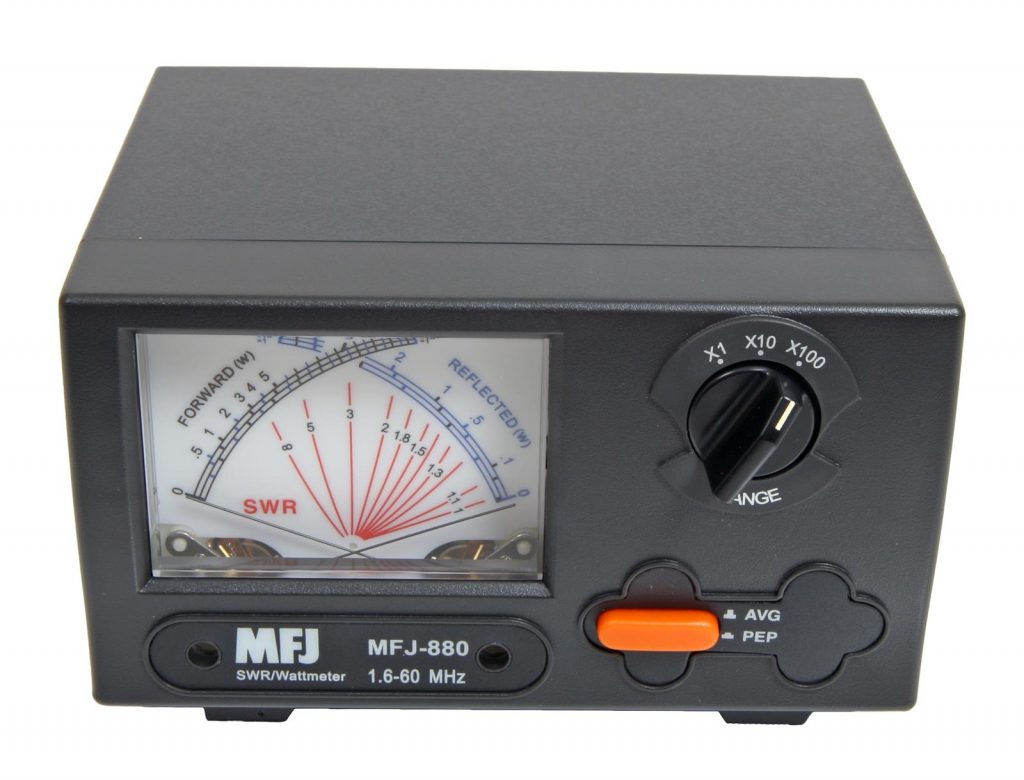Got Meter? Choosing the Right WattmeterRF inline power meters, or wattmeters, are used by many hams to measure the power flowing from the transceiver to the antenna–and also in the reverse direction. Inline wattmeters use a directional coupler to direct a small amount of power from the feedline to the wattmeter’s sensor.
Wattmeters can be used to test an operational antenna system, monitoring output levels and checking for reflected power. Just about all wattmeters measure SWR. There are many choices out there, with prices ranging from less than $100 to more than $600.
What Meter?
How do you pick the one that meets your needs?Here are some things you should consider:
Power: Determine the maximum amount of power you’ll be using. If you’re just operating 100 watts, there are several meters available that handle 100-300 watts. However, don’t ignore meters that cover full legal power or more. You’ll get more headroom if you decide at some point to add an amplifier, and the prices are similar. Higher power meters often have selectable ranges (i.e., 20/200/2,000 watts) like the MFJ 880 Grandmaster. Note that meter reading accuracy is often best when the power reading is over half scale, making selectable ranges a plus.

If you operate QRP (low power), you may want to look at the MFJ-813 or Elecraft W1 kit. Both provide high levels of accuracy and make it easier to interpret lower power readings.
Frequency Range: Select a meter designed for the frequency ranges you’ll be measuring. Some meters are designed for HF and VHF frequencies, others for VHF and UHF frequencies. The Diawa CN-901 covers up to 200 MHz, making it usable for HF frequencies and 2 meters. Diamond’s SX400 measures up to 200W on 140-525 MHz.
Accuracy: Inexpensive meters are accurate enough for general amateur use, typically within +/- 10% tolerance. Most hams use them to verify that power is getting to the antenna and that the SWR is within reasonable limits. If you need more accuracy, a commercial-grade directional wattmeter will provide more exact readings—for a cost. Coaxial Dynamics makes several models with interchangeable elements that will cover a wide range of frequencies.
Readability: Meters with larger faces are easier to view. Some meters have lighted surfaces for improved viewing in low-light environments, which usually require a 12V DC power source for the light.
The MFJ 868B has a jumbo meter measuring 6.5 inches diagonally—one you might be able to see without your glasses. Diawa’s line of meters also tend to be larger than average and have backlighting.
Display: Analog meters display results by moving a needle or needles across a scale; the slow movement of the display restricts them to reporting only average power. Most users find the cross-needle variety more convenient, such as the one on the Palstar PM2000A. One needle measures forward power while the other needle measures reverse power at the same time. Where the two needles cross is the SWR reading. Those who use manual tuners or power amplifiers find it’s easier to watch an analog meter’s single needle move as an indication of change.
Digital power meters can have elaborate displays that show more than just wattage and SWR. They can include frequency and other data. A numeric display makes it easier to detect smaller incremental changes, such as the one found on the MFJ-849.
A variation on the digital meter is the dual LED bar on the Elecraft W2. At the maximum power setting, it doesn’t give the resolution of a needle or numeric digital display. However, it makes up for it in overall accuracy and comes with PC software that provides a control panel with some additional features, including a numeric readout for wattage.
But My Radio Has One . . .
Most modern radios have digital meter displays or create an analog likeness for those who prefer the old-school variety. Many tuners and power amplifiers also include them. So why would you need another?
Although you may have an internal meter, you may discover external meters can be handy, especially if your radio uses an LCD meter display with discrete steps like the TS-590. An external directional wattmeter with several ranges (20W, 200W, 2,000W) is also a useful piece of test equipment. Besides monitoring the power that goes to the antenna after the tuner, I can also keep an eye on the “real” SWR of the antenna system–something very helpful during Ohio winters.

